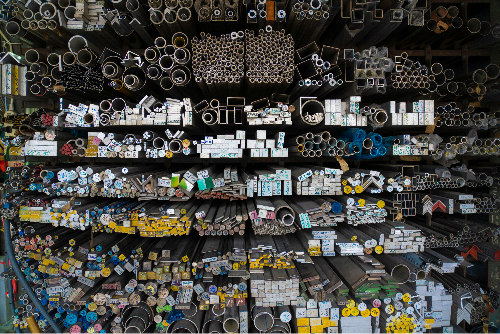The Workforce Challenge
- news and press

- Feb 23
- 3 min read
The Unseen Side of a Construction Hub: Not Just Building Materials, but Also Workforce Transport Can Be Greatly Reduced
In bustling cities, where roads are often congested, and space is a premium, logistics for construction projects are increasingly challenging. As urban areas expand and infrastructure becomes more complex, the need for efficient construction logistics is paramount. A construction hub, a central point for managing building materials, is often praised for reducing traffic movements by 73%. But there's another, lesser-known opportunity: drastically reducing the movement of construction personnel.
The Workforce Challenge
Urban projects are frequently located in densely populated neighborhoods where parking is scarce. Construction workers often commute by private vehicles, carrying their tools, which results in traffic jams, illegally parked cars, and inefficient use of space—frustrating for both the city and construction companies. In a city like Amsterdam, with 160 large-scale construction projects in the inner city, more than 30,000 workers can be on the move daily, putting significant pressure on infrastructure.
Municipalities require that parking for construction personnel doesn't strain the local area. Shuttle services are often mandatory but merely shift the parking issue elsewhere. How can this be handled more efficiently?
The Mobility Q-Construction Hub

A potential solution is the "Mobility Q-Construction Hub"—a centrally located facility on the city's outskirts linked to a Q-Construction Hub. This serves as a starting point for both materials and personnel, offering modern amenities like spacious parking, changing rooms, and waiting areas. Workers park here and travel in groups, emission-free, to the construction site.
This approach immediately reduces the number of vehicles entering and exiting the city, easing parking pressure downtown, avoiding high parking fees, and eliminating the hassle of searching for parking spots. Group transport allows construction companies to efficiently get their teams on-site on time. Even if a company already uses shuttle services, grouping personnel—like consolidating material shipments—saves significant costs and emissions. Outsourcing transport to a professional provider also simplifies and often reduces costs.
Smart Logistics Variations
With insights into construction sites and transport movements, the most efficient transport solution can be easily calculated. Qonnected Logistics, an organization that optimizes construction logistics, has the necessary data and expertise to efficiently transport both materials and personnel.
Moreover, a construction hub doesn’t always have to serve as a parking lot. Other locations, like train stations on the city's edge, can also act as pickup points, making personnel grouping simpler and more efficient. In cases where hundreds of workers commute long distances daily, another hub or parking facility can be the starting point, with emission-free transport into the city.
Synergy with Urban Infrastructure
Using a hub and group mobility benefits not only construction companies but also the city itself. Urban infrastructure faces less strain due to fewer individual vehicles entering the city, reducing traffic congestion, optimizing parking space usage, and enhancing urban livability. Residents, shoppers, and other city users all benefit.
Public transportation can seamlessly connect with this system, allowing workers without private vehicles easy access to the hub. Electric group transport contributes to more sustainable urban traffic and reduces CO2 emissions, advancing a greener city vision.
Future of Urban Logistics
Urban logistics for construction personnel illustrate how smart solutions can enhance city dynamics. Using hubs and group mobility answers the growing demand for efficiency in the construction sector and urban planning. This model can be further optimized in the future with technology like automated vehicles and real-time route planning.
This innovative concept shows that collaboration between cities, companies, and transport organizations leads not only to more efficient logistics but also to more sustainable and livable cities. It's a win-win situation contributing to a future where cities can grow and breathe simultaneously.
For more information or to arrange your shuttle service, visit: www.qonnected-logistics.com (P+R)


_edited.png)
_edited.png)
_edited.png)


_edited.png)
_edited_edited.png)









_edited.png)



Comments